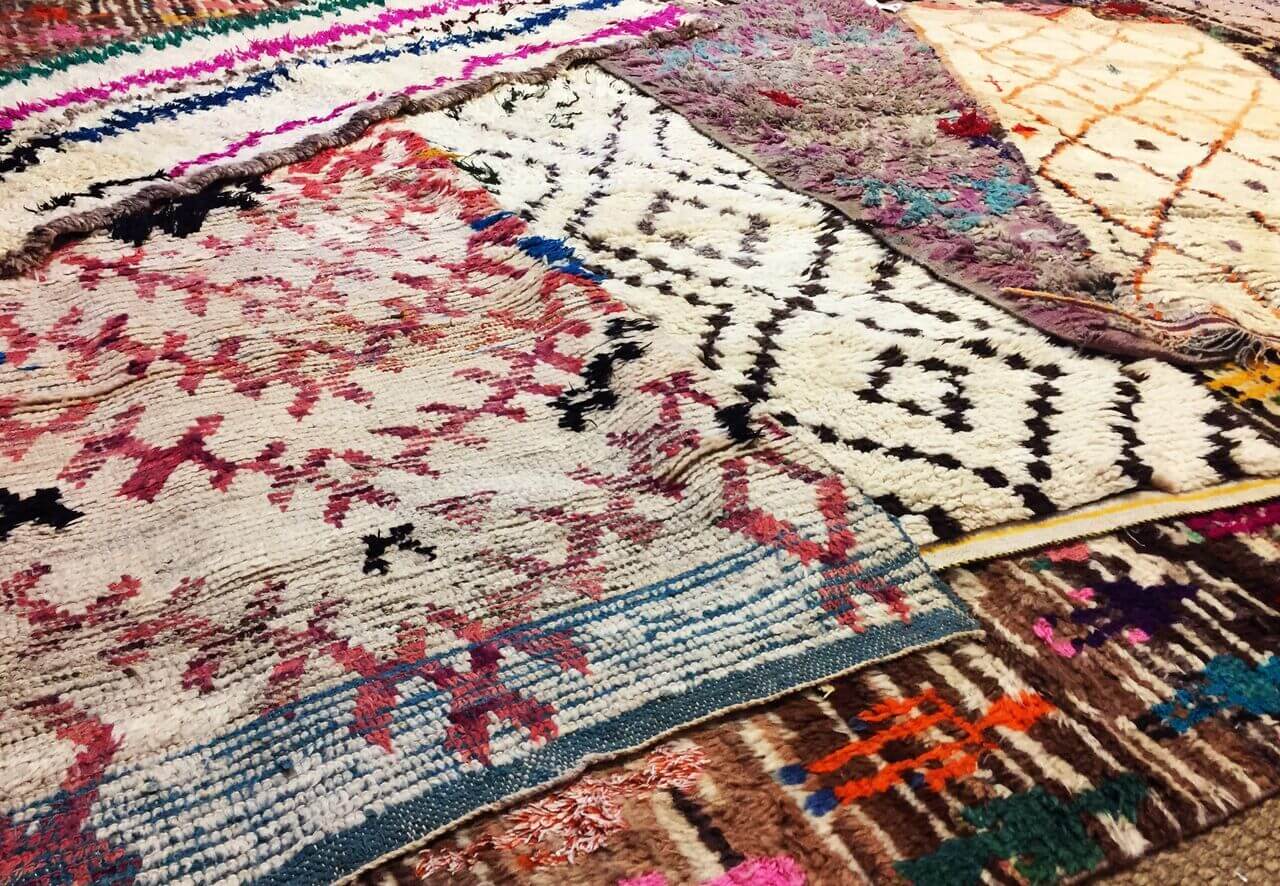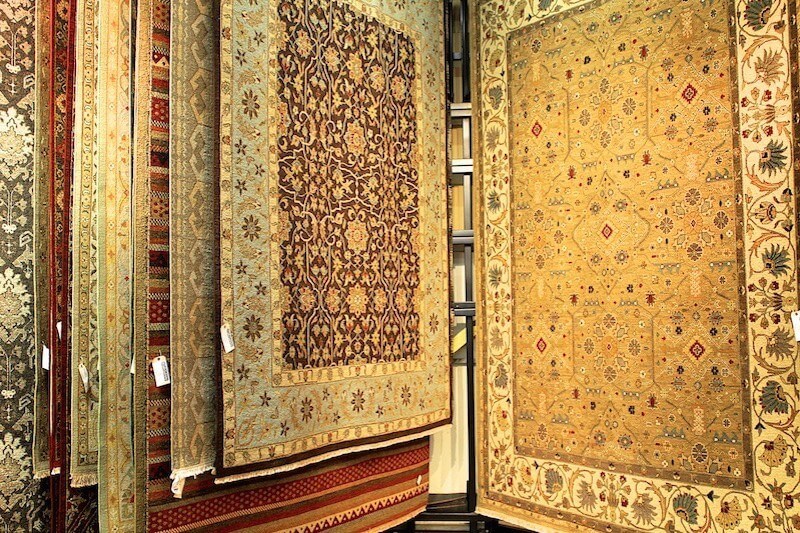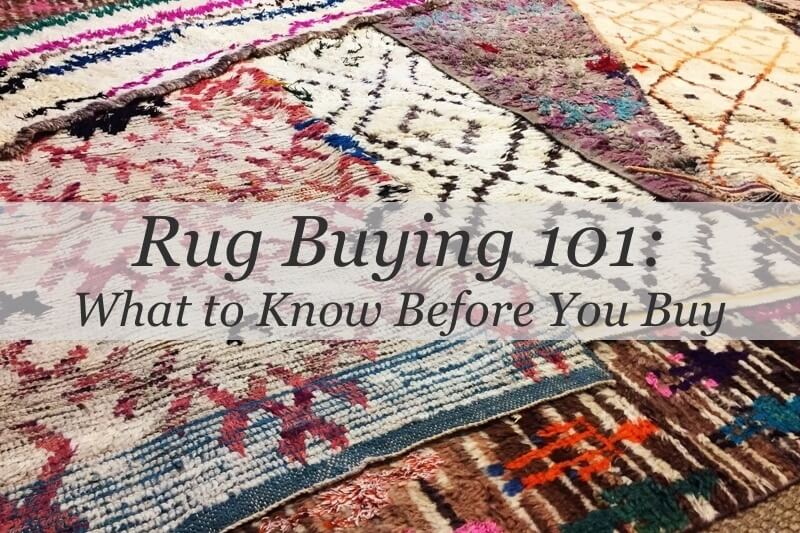Buying a rug can be extremely daunting. It’s a staple piece in your home that will last years and years, so you want to make sure you are getting the best quality, material and price for your lifestyle. Whether you’re looking for a slightly worn oriental rug to add a pop of color to your dining room or a large rug that can withstand heavy traffic and pets, we spoke to three Southern rug pros who covered the basics on all things rugs.
Where do I start?
As you begin your rug hunt, it’s always best to start decorating your room from the ground up if you can. “Find something you truly love in the colors that you love, and then build from there,” said Helen Kiser of Kiser’s Floor Fashions in Memphis. It’s easier to find furniture that matches a rug rather than the other way around. However, if you do already have furniture in the room, be sure to bring fabric samples with you to your local rug store so they can help you accurately color match.
It’s always best to measure your room before you go rug shopping, as a common first-time-buyer mistake is buying too small. Paige Albright of Paige Albright Orientals in Birmingham always measures a client’s space wall-to-wall, coming up with a maximum and a minimum size that will work. You want to make sure that all of your furniture is able to sit uniformly on the rug. So whether just the front legs of the sofa or the whole thing are touching, the rest of your furniture should follow suit. “It’s sort of like solving a puzzle,” Paige says.
Finding that perfect size can sometimes be difficult in today’s world of sprawling, open floor plans, and Andrew Denny of Textures Flooring in Nashville agrees. “When you consider the size your rug needs to be, note that prefabricated rugs often only come as large as 8-by-10-feet or 9-by-12-feet,” he says. “Custom-sized area rugs are a great option because scale and size options are unlimited.”

Material is the key to longevity.
After you have your space all measured and know generally what style will work best (contemporary, traditional, etc.), it’s time to think about material. Here are a few pointers to keep in mind:
- High traffic areas (such as a living room or entryway) need something that will last. All three experts agree that wool rugs with a healthier pile would withstand constant trampling by people and pets. Specifically, Helen Kiser recommends the hand-knotted wool Soumak rugs. They are reversible, come in lots of colors and sizes, and can take a beating. While they are not machine-made prices, they are still affordable. The only downside with wool is that it isn’t the softest, so if you are seeking something your baby can crawl on, try going the machine-made route and getting a nylon and wool blend.
- For dining rooms, a popular choice are actually outdoor rugs, or even wool or synthetic fiber rugs with a flat weave and low pile. While everyone loves sinking their feet in a super plush rug, the dining room isn’t the place for a high-pile rug. Crumbs and chair legs constantly get caught up in the fibers. Another hint: You’ll want something with lots of pattern in darker colors for your dining room — a light neutral is a dead giveaway for any food or wine stains!
- Guest bedrooms, offices or hardly used rooms are ideal for luxurious bamboo silk rugs or rugs with more fragile accents. “For low traffic, many clients love wool with tencel accents,” Andrew shares. “This provides a silk-like luster, but the tencel can be fragile.” Animal skins are also a good choice in these types of spaces, as they are typically fairly easy to clean and don’t do well with high traffic.
- Kitchen rugs brighten everything up and provide texture, but they are often times hard to shop for as they are put through the ringer day in and day out. Spills, damp conditions and constant traffic mean you’re looking for something durable. A flatweave rug made of cotton and other organic fibers is inexpensive, easy to clean (toss it in the washer!) and colorfast. Other natural materials like jute and sisal are also good choices.
- Oriental rugs and sun don’t go together. For a sunroom or a room that gets a lot of light, a synthetic rug made of polypropylene, nylon or polyester may be your best bet. While sometimes not the most luxurious feeling, manufacturers over the years have gotten better at mimicking the feeling of natural fibers underfoot. Jute, sisal and bamboo rugs are once again a great pick and won’t get damaged by the sun.

These small Moroccan rugs at Paige Albright Orientals show just how much fun you can have with your selection.
All about cleaning
Once you’ve picked out your new rug, you may worry about keeping it looking new with kids and dinner parties and muddy shoes, but cleaning and maintaining your rug shouldn’t cause you stress. Here’s what to keep in mind when it comes to caring for your new rug.
- Water is your friend when it comes to cleaning a rug. Paige swears by it. “You can get 99.9% of stains [out] with water and a little patience,” she says. Helen echoes this, suggesting that to clean a stain from a wool rug, blot as much as you can with a damp cloth. On her rugs, she uses a product called Resista, which comes with a pre-treatment spray and a dry powder that you lightly brush on and leave overnight. And while water is an excellent choice for cleaning out a stain, never get a rug soaking wet, she warns.
- Don’t vacuum too much. A common problem for rug wear-and-tear is being too vacuum-happy. Super powerful vacuums should be avoided, and your rug really only needs a good vacuum once or twice a week. Kiser recommends setting your vacuum on the highest-pile setting and always turning off the beater brush. Another good tip? Don’t go from the hardwood or tile directly to the rug. This will pull the rug’s edges in. Instead, lift up your vacuum and place it on your rug.
- Rotate your rug if you notice part of it is getting more wear than the rest.
- For an instant freshening, Paige suggests sprinkling your rug with baking soda and letting it sit. Then, just vacuum it up (using our vacuum tips above, of course!)
- White wine gets out red wine stains.
Other tips and tricks
- If you can, always buy a rug in person. You wouldn’t buy a couch without sitting in it, so why purchase a rug without feeling it? Plus, the color shown on your computer screen is likely way off. “You cannot photograph a rug for color. You can’t touch it or feel it, and there’s just no way of knowing what you’re getting,” Helen remarks.
- If you bought a rug and it now seems too bright for your space, try simply flipping it over. Paige explains that the back of the rug is always a bit more saturated than the front, dulling the colors a bit.
- If you have a big space to cover and can’t find a rug you just love, try two rugs! Layering rugs can add much-needed texture and warmth to a space. For the bottom rug, try a neutral natural fiber rug, like a sisal or jute rug, and then place something more colorful and funky on top. Updating an old Persian rug is a cinch with a zebra or cowhide on top.
- Lastly, Andrew shares that if a rug is shiny but doesn’t have any silk in it, it’s probably not the best quality.

How a rug looks in person versus on a computer screen can be vastly different. “There’s just no way of knowing what you’re getting,” she says, underscoring the importance of seeing it in person before you purchase.
When you’re ready to buy, keep these pro pointers in mind and make a thoughtful, well-appointed selection that best suits your personality and your home. Happy rug shopping!
**********
Check out some amazing Southern spaces. Click HERE and prepare to be inspired!



















